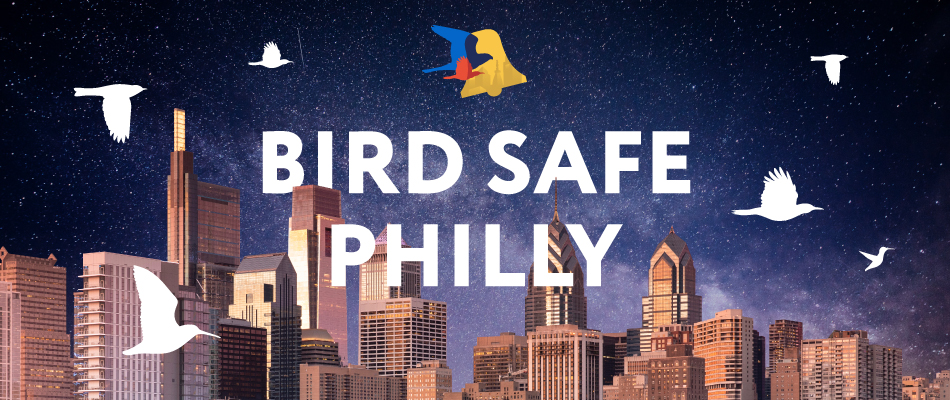Please join our project, and remember to add your observations to it manually. Thank you for your participation!
The purpose of this project is to monitor bird-window collisions in greater Philadelphia.* While this project was catalyzed by the historic bird-window collision event in Philadelphia on October 2, 2020, these collisions occur year-round - though most heavily during spring and fall migration periods. With up to one billion birds killed annually, window collisions are second only to cats as a cause of bird mortality.
Data collected through this project will help to identify which buildings pose the greatest threats to birds, and provide information on the timing of collision events, and on which species are most affected. This will inform the development of Bird Safe Philly’s Lights Out program and other measures to prevent bird deaths, and to assess the effectiveness of these measures.
Please try to take at least three close-up pictures of each window-strike victim showing the bird from different angles to help with identification, as well a broader picture or two showing the building (and its windows) that the bird may have struck. Please include the address - or as much location information as possible. It is important to fill out the observation fields: 1): noting whether the bird is dead, or alive (but injured and/or stunned); and 2): the likely cause of injury or mortality.
See https://www.birdsafephilly.org/ for more information, including what to do with injured/stunned birds, and what to do with dead birds.
What to do with an injured/stunned bird:
Most dazed birds found below buildings have suffered internal injuries from which they are unlikely to recover without rehabilitation. Place your bird in a box with air holes and contact:
Philadelphia County, PA: The Wildlife Center at the Schuylkill Center for Environmental Education, https://www.schuylkillcenter.org/departments/wildlife/ (215) 482-7300
Montgomery County, PA: Philadelphia Metro Wildlife Center, https://www.phillywildlife.org/ (267) 416-9453
Bucks County, PA: The Aark, https://www.aark.org/ (215) 249-1938
Lancaster County, PA: Raven Ridge Wildlife Center, https://ravenridgewildlifecenter.org/ (707) 808-2652
(raptors, waterfowl only)
New Castle County, DE: Tri-State Bird Rescue and Research, https://tristatebird.org/ (302) 737-9543
Mercer County, NJ: Mercer County Wildlife Center, http://www.wildlifecenterfriends.org/ (609) 303-0552
- including the counties of Philadelphia, Bucks, Chester, Delaware and Montgomery, Delaware in PA; Burlington, Camden, and Gloucester in NJ.
What to do with dead birds:
After documenting for this project, please consider donating to the research collection of the Academy of Natural Sciences. Each specimen may be picked up, using a separate ziplock bag, turned inside out. Enclose a label on which you’ve written the date (please write the entire date - day/month/year); time; your name; the address (including city) where the bird was found; the side of the building (N,S, E, or W); the species if you know it (if not, one of us will ID it for you); the likely cause of death; and the associated iNaturalist observation number (the number at the end of the web address on your computer, or that appears on your mobile device when you click “share.”).
You may deposit your specimen(s) between 15 March and 30 May every day between 8:00 and 9:00 am at the Academy’s 19th Street entrance. If you are unable to drop off the specimens on the day that you collected them, you must place the bagged birds in a freezer until drop-off can be arranged. (Note that it is illegal to possess a dead bird unless you plan to deliver it to the Academy.) Please check in with Security at the 19th Street desk and they will point direct you to the Bird Safe Philly Freezer.
Thank you again for your participation in Bird Safe Philly!
less ↑






